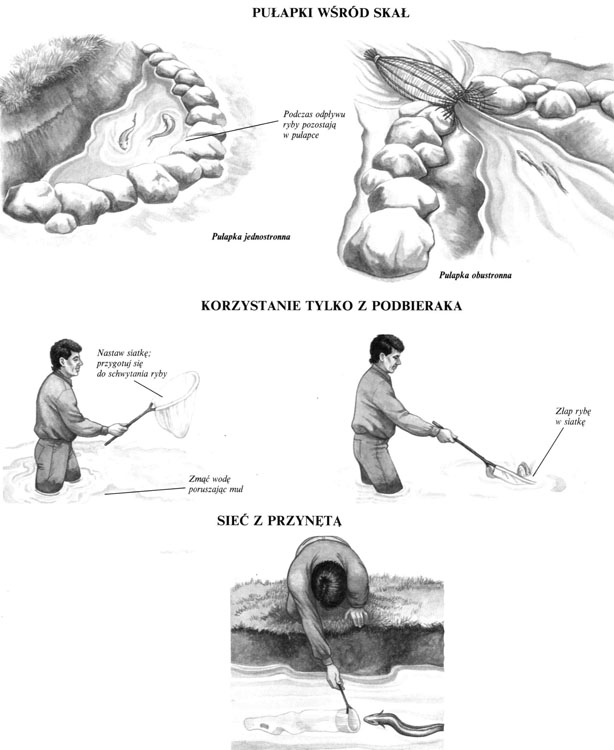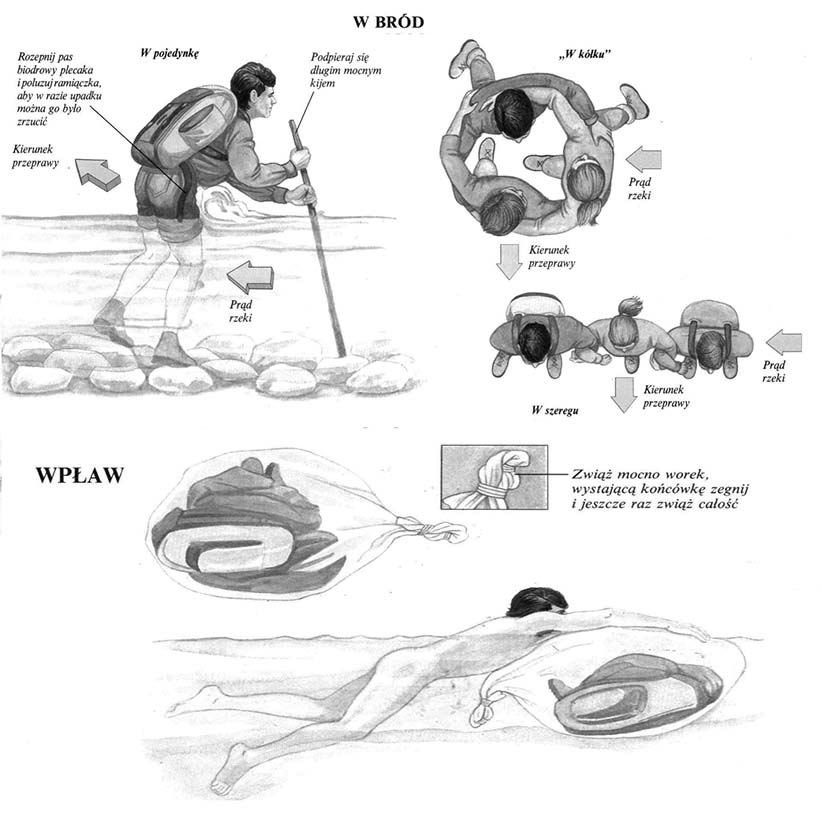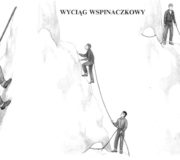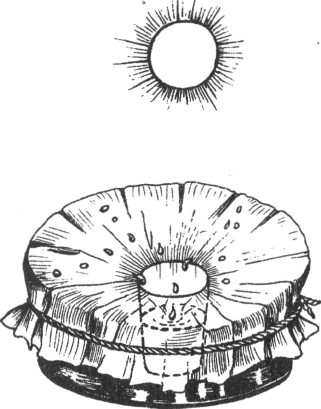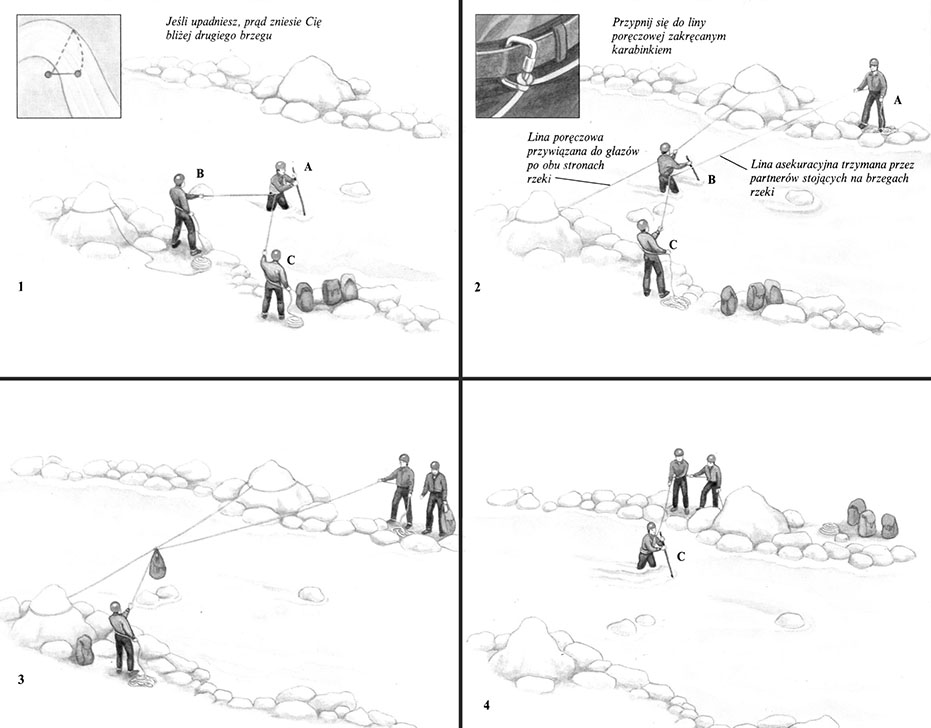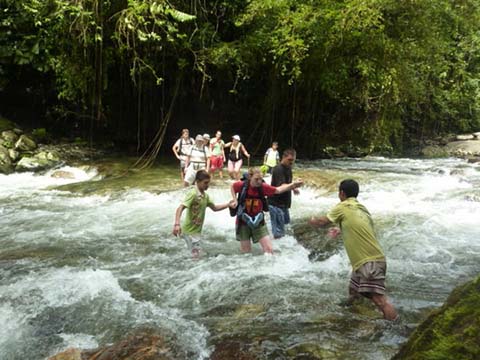 Rzeki i strumienie są zawsze niebezpieczne zarówno u źródeł i w górnym biegu, gdy są rwącymi i spienionymi potokami, jak i w pobliżu ujścia, w dolnym biegu, gdzie leniwie toczą wielkie masy wody tworząc rozlewiska. Nawet jeśli rzeka wydaje się bezpieczna – nurt jest słaby, a woda płytka, można napotkać ukryte niebezpieczeństwa. W najbardziej przezroczystej wodzie nie widać wszystkiego, co kryje się pod jej powierzchnią. Łatwiej przeprawiać się przez rzekę w górnym jej biegu niż w dolnym, tam jest bowiem głęboko. Trzeba jednak uważać na rwący nurt. Ogólnie przyjmuje się, że wolno płynące rzeki są głębokie, a szybko płynące – płytkie, za to częściej zdarzają się w nich zdradliwe wiry, podmyte brzegi i niewidoczne przeszkody. Nigdy nie przeprawiaj się przez rzekę wpław ani w bród, jeśli można przekroczyć ją suchą nogą.
Rzeki i strumienie są zawsze niebezpieczne zarówno u źródeł i w górnym biegu, gdy są rwącymi i spienionymi potokami, jak i w pobliżu ujścia, w dolnym biegu, gdzie leniwie toczą wielkie masy wody tworząc rozlewiska. Nawet jeśli rzeka wydaje się bezpieczna – nurt jest słaby, a woda płytka, można napotkać ukryte niebezpieczeństwa. W najbardziej przezroczystej wodzie nie widać wszystkiego, co kryje się pod jej powierzchnią. Łatwiej przeprawiać się przez rzekę w górnym jej biegu niż w dolnym, tam jest bowiem głęboko. Trzeba jednak uważać na rwący nurt. Ogólnie przyjmuje się, że wolno płynące rzeki są głębokie, a szybko płynące – płytkie, za to częściej zdarzają się w nich zdradliwe wiry, podmyte brzegi i niewidoczne przeszkody. Nigdy nie przeprawiaj się przez rzekę wpław ani w bród, jeśli można przekroczyć ją suchą nogą.
MIEJSCE PRZEPRAWY
Najlepiej przeprawić się przez rzekę w miejscu, w którym stoi most, kładka lub czeka prom. Dlatego zanim wejdziesz do wody, zrób rekonesans w górę i dół rzeki. Jeśli nawet nie będzie w pobliżu mostu, może uda Ci się znaleźć miejsce, w którym koryto rzeki będzie bezpieczne, a zatem i przeprawa w bród łatwiejsza. Zwróć uwagę, czy przeciwległy brzeg nie wznosi się zbyt stromo.
Zdradliwe rzeki
Na ogół nie sposób określić głębokości rzeki, bez wejścia do niej. Podwodne przeszkody zwykle są z brzegu niewidoczne. Stojąc na lądzie trudno również ustalić, jak silny jest prąd.
Wystające kamienie
Z zanurzonych do połowy w wodzie głazów łatwo jest się ześlizgnąć, a kory to rzeki często bywa w takich miejscach głębsze.
Przełom rzeki
Bezpieczniej przekraczać rzekę między zakrętami niż za lub przed, gdzie prąd jest zwykle szybszy.
Ukryte kamienie
Kamienie leżące na dnie, które nie wystają nad powierzchnię wody, tworzą zawirowania. Załamujące się fale wskazują kierunek prądu wody.
Osady
Trzeba unikać zabagnionych brzegów i miejsc, gdzie zbierają się osady – roślinność, spadłe gałęzie, gdyż można w nich utknąć, a nawet zostać wciągniętym pod wodę.
Podcięty brzeg
Wysoki lub podcięty brzeg utrudnia wydostanie się z rzeki.
Stojące fale
Widoczne na powierzchni mogą być wywołane bardzo silnym prądem lub załamywaniem wody przez zalegające na dnie kamienie.
Piaszczysta łacha
Pokonując rzekę można kierować się na piaszczystą łachę. Trzeba jednak pamiętać, że prąd po jej drugiej stronie może być silniejszy.
